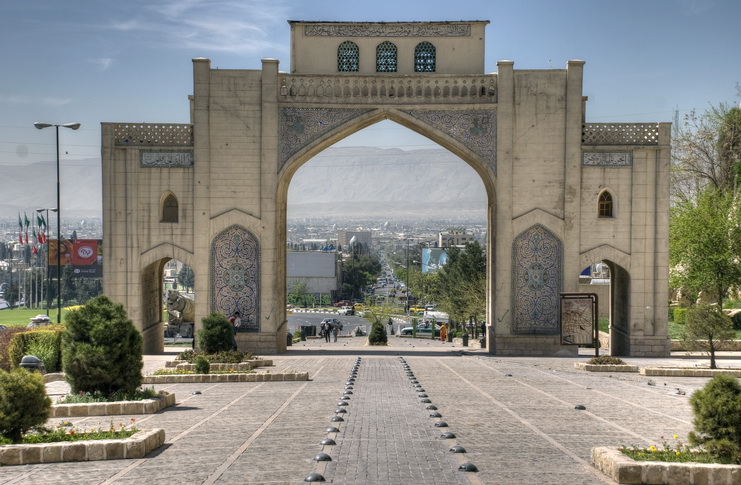Quran Gate on:
[Wikipedia]
[Google]
[Amazon]
 Qur'an Gate () or Shiraz Gate () is a historic gate in the north of
Qur'an Gate () or Shiraz Gate () is a historic gate in the north of
Panoramic Photography from 2015 of Qur'an Gate
Architecture in Iran Buildings and structures completed in the 10th century Buildings and structures in Shiraz City gates Tourist attractions in Shiraz {{Iran-stub
 Qur'an Gate () or Shiraz Gate () is a historic gate in the north of
Qur'an Gate () or Shiraz Gate () is a historic gate in the north of Shiraz
Shiraz (; ) is the List of largest cities of Iran, fifth-most-populous city of Iran and the capital of Fars province, which has been historically known as Pars (Sasanian province), Pars () and Persis. As of the 2016 national census, the popu ...
, Iran
Iran, officially the Islamic Republic of Iran (IRI) and also known as Persia, is a country in West Asia. It borders Iraq to the west, Turkey, Azerbaijan, and Armenia to the northwest, the Caspian Sea to the north, Turkmenistan to the nort ...
. It is located at the northeastern entrance of the city, on the way to Marvdasht
Marvdasht () is a city in the Central District (Marvdasht County), Central District of Marvdasht County, Fars province, Fars province, Iran, serving as capital of both the county and the district.
Etymology
Some historians hold that Marv ...
and Isfahan
Isfahan or Esfahan ( ) is a city in the Central District (Isfahan County), Central District of Isfahan County, Isfahan province, Iran. It is the capital of the province, the county, and the district. It is located south of Tehran. The city ...
, between Baba Kouhi and Chehel Maqam Mountains near Allahu Akbar gorge.Shiraz MunicipalityHistory
The Gate was first built during the reign of 'Adud ad-Dawla. By the time of theZand dynasty
The Zand dynasty () was an Iranian dynasty, founded by Karim Khan Zand (1751–1779) that initially ruled southern and central Iran in the 18th century. It later expanded to include much of the rest of contemporary Iran (except for the provi ...
, it had sustained a lot of damage, so it was restored and a small room on top was added, in which were kept hand-written Qur’āns by Sultan Ibrahim Bin Shahrukh Gurekani. The two Qur’āns are known as Hifdah-Man.
During the Qajar dynasty
The Qajar family (; 1789–1925) was an Iranian royal family founded by Mohammad Khan (), a member of the Qoyunlu clan of the Turkoman-descended Qajar tribe. The dynasty's effective rule in Iran ended in 1925 when Iran's '' Majlis'', conven ...
, the gate was damaged by multiple earthquakes; it was later restored by Mohammad Zaki Khan Nouri. In 1937 the two Qur’āns were taken from the gate and were taken to the Pars Museum in Shiraz, where they remain today. In 1949 the arch of the gate was restored by Hosein Igar, a merchant also known as Etemad Tojar.
References
External links
Panoramic Photography from 2015 of Qur'an Gate
Architecture in Iran Buildings and structures completed in the 10th century Buildings and structures in Shiraz City gates Tourist attractions in Shiraz {{Iran-stub